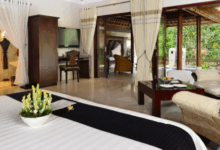Boutique Hotels In Singapore
Singapore, a vibrant tapestry of modernity and tradition, offers a unique accommodation experience beyond the standard hotel chain. Boutique hotels in Singapore provide a captivating alternative, promising intimate settings, personalized service, and a distinct sense of place. These havens of style and comfort cater to discerning travelers seeking an unforgettable stay, each offering a curated experience reflecting the city’s dynamic energy and rich cultural heritage.
From the chic minimalist designs of hotels nestled in the heart of the city’s bustling districts to the tranquil oases tucked away in quieter neighborhoods, Singapore’s boutique hotels cater to a diverse range of preferences. This exploration delves into the defining characteristics of these unique establishments, examining their locations, amenities, price points, and the overall guest experience, helping you discover the perfect boutique hotel for your next Singaporean adventure.
Defining “Boutique Hotel” in Singapore’s Context
Singapore’s vibrant hospitality scene boasts a diverse range of accommodations, from sprawling international chains to intimate boutique hotels. Understanding the nuances of what constitutes a boutique hotel in this context is crucial for both travellers and industry professionals. This section will delve into the defining characteristics of these unique establishments, highlighting their differences from larger chains and comparing them to similar offerings in other Asian cities.Boutique hotels in Singapore are generally characterized by their smaller scale, personalized service, and distinctive design.
Unlike larger chain hotels that often prioritize standardization and efficiency, boutique hotels embrace individuality and curate a unique guest experience. This is reflected in their size, typically featuring fewer than 100 rooms, allowing for a higher level of personalized attention to each guest. The design often showcases local artistry and cultural influences, creating a distinctly Singaporean atmosphere, in contrast to the more generic feel of many international chains.
Furthermore, the level of service is often more attentive and tailored to individual needs, reflecting a commitment to creating a memorable and personalized stay.
Characteristics of Singaporean Boutique Hotels
Singaporean boutique hotels often prioritize bespoke experiences, focusing on creating a unique atmosphere and offering tailored services that cater to individual preferences. This might include curated in-room amenities reflecting local culture, personalized concierge services, and unique dining experiences featuring local cuisine. The design aesthetic often incorporates elements of modern design blended with traditional Singaporean motifs, creating a visually stunning and culturally rich environment.
Many also incorporate sustainable practices, reflecting a growing awareness of environmental responsibility amongst both travellers and the hospitality industry. Examples include the use of locally sourced materials in décor and initiatives to minimize waste and energy consumption. The emphasis is less on sheer scale and more on creating a memorable and intimate experience.
Comparison with Boutique Hotels in Other Asian Cities
While the concept of a boutique hotel exists across major Asian cities like Bangkok, Tokyo, and Hong Kong, the specific characteristics and USPs can vary significantly. For instance, boutique hotels in Bangkok might heavily emphasize traditional Thai design and incorporate elements of spa culture, whereas those in Tokyo might focus on minimalist aesthetics and cutting-edge technology. Singapore’s boutique hotels, however, often strive to balance a modern aesthetic with a distinct Singaporean identity, showcasing the country’s unique blend of cultures and architectural styles.
This focus on local culture differentiates Singapore’s offerings from those in other cities where the emphasis may be more on international design trends or a specific local cultural aspect.
Unique Selling Propositions (USPs) of Singaporean Boutique Hotels
The unique selling propositions of Singaporean boutique hotels often revolve around the experience they offer. This includes the personalized service, the unique design reflecting local culture, and the curated amenities. Many boutique hotels leverage their smaller scale to offer a more intimate and personalized experience, fostering a stronger connection with guests. They may also partner with local artisans and businesses, offering exclusive experiences that are not readily available elsewhere.
For example, a boutique hotel might offer a private cooking class featuring local cuisine, a guided tour of a hidden cultural gem, or a curated shopping experience at independent boutiques. This focus on creating unique and memorable experiences sets them apart from larger chain hotels that often prioritize efficiency and standardization over personalized service and local engagement.
Location and Ambiance of Singapore’s Boutique Hotels
Singapore’s boutique hotels are strategically located to offer guests a unique blend of convenience and exclusivity. Their locations are carefully chosen to capitalize on proximity to key attractions while maintaining a sense of seclusion and intimate atmosphere. This results in a diverse range of experiences, depending on the hotel’s specific location and design philosophy.The choice of location significantly influences the overall ambiance of a boutique hotel.
Factors such as proximity to cultural landmarks, vibrant nightlife, or tranquil gardens all contribute to the unique character of each establishment. This careful consideration of location and design allows boutique hotels to cater to a wide range of traveler preferences.
Key Locations and Location Rationale
Boutique hotels in Singapore are often concentrated in several key areas, each offering a distinct atmosphere. The Civic District, with its colonial architecture and proximity to government buildings and museums, attracts hotels aiming for a sophisticated and historical ambiance. Areas like Tiong Bahru, known for its charming Art Deco architecture and local cafes, offer a more bohemian and culturally rich experience.
The vibrant districts of Bugis and Little India provide opportunities for hotels to immerse guests in the multicultural heart of Singapore. Finally, the luxurious waterfront areas and Sentosa Island cater to hotels seeking to provide a more opulent and resort-like experience. The choice of location reflects the target market and the overall brand identity the hotel wishes to project.
Design Styles and Architectural Features
Singapore’s boutique hotels showcase a remarkable diversity of architectural styles and design features. Many incorporate elements of colonial architecture, reflecting Singapore’s rich history, with high ceilings, large windows, and ornate detailing. Others embrace a more modern aesthetic, featuring sleek lines, minimalist designs, and the use of sustainable materials. Some hotels blend these styles, creating a unique fusion of old and new.
The incorporation of local artwork, handcrafted furniture, and regionally inspired décor further enhances the distinctive character of each hotel. Attention to detail is paramount, creating a curated environment that reflects both the hotel’s brand identity and the cultural context of Singapore.
Comparison of Three Boutique Hotels
| Hotel Name | Location | Ambiance | Architectural Style |
|---|---|---|---|
| (Example Hotel 1 – Name needed, replace with actual hotel) | (e.g., Civic District) | (e.g., Sophisticated and historical) | (e.g., Colonial with modern accents) |
| (Example Hotel 2 – Name needed, replace with actual hotel) | (e.g., Tiong Bahru) | (e.g., Bohemian and culturally rich) | (e.g., Art Deco inspired) |
| (Example Hotel 3 – Name needed, replace with actual hotel) | (e.g., Sentosa Island) | (e.g., Luxurious and resort-like) | (e.g., Modern tropical) |
Services and Amenities Offered
Singapore’s boutique hotels distinguish themselves through a curated selection of services and amenities designed to enhance the guest experience beyond the typical offerings of larger chains. These hotels often focus on personalized attention and unique touches that create a memorable stay. This extends beyond the standard room service and Wi-Fi to encompass bespoke experiences tailored to individual preferences.
Many boutique hotels in Singapore offer services and amenities that cater to the discerning traveler seeking a more intimate and luxurious experience. This might include exclusive access to private lounges, personalized concierge services that go above and beyond typical requests, and curated experiences that showcase the best of Singaporean culture and lifestyle. The emphasis is on creating a personalized and memorable stay, fostering a sense of community and connection rather than impersonal efficiency.
Unique Services and Amenities
Singapore’s boutique hotels often feature unique services and amenities to differentiate themselves. For instance, some hotels offer complimentary curated experiences like private cocktail-making classes, bespoke aromatherapy sessions in the room, or guided tours focusing on niche aspects of Singaporean culture, such as street art or Peranakan heritage. Others may provide access to exclusive partnerships with local businesses, offering guests priority bookings at popular restaurants or access to private events.
The focus is on providing curated experiences rather than simply listing amenities. This creates a sense of exclusivity and personalized attention.
Comparative Table of Amenities
The following table compares the amenities offered by four hypothetical boutique hotels in Singapore, illustrating the range of services available. Note that specific offerings can vary seasonally and are subject to change based on hotel policy.
| Hotel Name | Room Amenities | Hotel Amenities | Unique Services |
|---|---|---|---|
| Hotel A | High-thread-count linens, Nespresso machine, complimentary minibar, rain shower | Rooftop infinity pool, fitness center, 24-hour concierge | Private yoga sessions, curated local art displays |
| Hotel B | Turndown service with aromatherapy, Bluetooth speakers, smart TV, personalized welcome amenity | Spa and wellness center, restaurant with Michelin-recommended chef, library | Complimentary bicycle rentals, guided heritage walks |
| Hotel C | Egyptian cotton sheets, espresso machine, complimentary high-speed Wi-Fi, balcony with city views | Outdoor pool, bar, business center | Mixology classes, access to private members’ club |
| Hotel D | Pillow menu, bathrobes and slippers, complimentary toiletries, in-room tablet | Fitness center, rooftop bar with panoramic views, 24/7 room service | Personalized itinerary planning, exclusive access to local events |
Personalized Service
Personalized service is a hallmark of Singapore’s boutique hotels. Guests can expect attentive staff who anticipate their needs, remember preferences from previous stays (if applicable), and go the extra mile to ensure a comfortable and memorable experience. This might include personalized welcome notes, customized room setups based on guest requests (e.g., specific pillow types, preferred room temperature), and proactive assistance with booking restaurants, tours, or transportation.
The goal is to create a seamless and effortless stay, tailored to the individual guest’s needs and desires. This contrasts with larger hotels where interactions might feel more transactional.
Price Range and Target Market
Singapore’s boutique hotels cater to a diverse clientele, reflecting the city-state’s cosmopolitan nature and varied economic landscape. Pricing structures are significantly influenced by factors such as location, amenities, and the overall brand experience offered. Understanding the price range and corresponding target market is crucial for both potential guests and hotel operators alike.The price of a boutique hotel stay in Singapore is highly variable and depends on several interconnected factors.
This results in a broad spectrum of options, allowing for a diverse range of travelers to find accommodation that suits their needs and budget.
Price Categories and Corresponding Target Markets
The following categories provide a general overview; individual hotel pricing fluctuates based on seasonality and demand.
- Budget: Generally, under SGD $200 per night. This category often includes smaller, independently owned hotels or those located slightly further from the city center. The target market is budget-conscious travelers, including backpackers, students, and young professionals prioritizing affordability over extensive amenities.
- Mid-range: Typically ranging from SGD $200 to SGD $500 per night. Hotels in this category usually offer a balance between comfort, location, and amenities. The target market comprises leisure travelers, business travelers on moderate budgets, and families seeking a comfortable and convenient stay without the premium cost of luxury hotels.
- Luxury: Prices exceeding SGD $500 per night. These hotels prioritize exceptional service, unique design, and exclusive amenities. The target market includes high-net-worth individuals, discerning travelers seeking a premium experience, and those celebrating special occasions. This segment frequently features bespoke services and highly personalized attention.
Factors Influencing Boutique Hotel Pricing in Singapore
Several key factors contribute to the pricing strategy of Singapore’s boutique hotels.
- Location: Hotels in prime locations, such as Orchard Road or the Marina Bay area, command higher prices due to increased demand and desirability. Proximity to major attractions and transportation hubs significantly impacts pricing.
- Amenities and Services: The range and quality of amenities, including in-room features (e.g., high-end toiletries, private balconies), on-site facilities (e.g., spas, restaurants, pools), and personalized services (e.g., butler service, concierge assistance), directly affect pricing. Hotels offering unique or highly sought-after amenities will charge a premium.
- Brand Reputation and Design: Hotels with established reputations for excellent service and unique design concepts often justify higher prices. The overall brand experience, including the hotel’s aesthetic appeal and commitment to customer satisfaction, significantly influences pricing.
- Seasonality and Demand: Prices fluctuate depending on the time of year and special events. Peak seasons, such as major holidays and conferences, typically see higher room rates due to increased demand.
- Operating Costs: Factors like staffing costs, maintenance expenses, and utility bills influence a hotel’s overall operating costs and, consequently, its pricing strategy. Hotels located in areas with high operating costs may have higher room rates to offset expenses.
Guest Experiences and Reviews
Guest experiences and reviews are crucial for understanding the strengths and weaknesses of Singapore’s boutique hotels. Analyzing both positive and negative feedback provides valuable insights into what contributes to a memorable stay and areas requiring improvement. This analysis helps hotels refine their services and maintain a high standard of hospitality.
Positive Guest Reviews: Examples
Positive reviews frequently highlight the personalized service, unique design, and convenient locations of Singapore’s boutique hotels. For example, a guest at Hotel G Singapore might praise the “stylish rooms and friendly staff,” while a review of The Quincy Hotel might emphasize its “excellent location and luxurious amenities.” Another common theme is the attention to detail, with guests appreciating thoughtful touches like complimentary welcome drinks or personalized welcome notes.
Many reviews specifically mention the exceptional service provided by the hotel staff, creating a welcoming and memorable experience. Specific comments often include phrases like “outstanding customer service,” “attentive staff,” and “went above and beyond to help.” The unique character of each hotel is also often highlighted, with guests appreciating the individual design and atmosphere that sets them apart from larger chain hotels.
Negative Guest Reviews: Examples and Potential Improvements
Negative reviews often focus on areas such as room size, noise levels, or inconsistencies in service. For instance, some guests might complain about smaller-than-expected rooms in certain boutique hotels, or experience noise disturbances from nearby streets or other guests. Inconsistencies in service, such as slow response times to requests or a lack of attentiveness from staff, are also frequently cited.
To address these issues, hotels could implement strategies such as providing more accurate room descriptions on their websites, investing in better soundproofing, and implementing stricter service standards and staff training programs. Proactive communication with guests, addressing potential concerns before they arise, can also significantly improve the overall guest experience and minimize negative reviews. For example, proactively informing guests about potential noise levels from a nearby construction site would allow them to manage their expectations.
Fictional Guest Experience Narrative
Ms. Anya Sharma, a travel writer, booked a stay at “The Peranakan,” a fictional boutique hotel nestled in the vibrant Joo Chiat district. The hotel’s charming architecture, a blend of Peranakan and colonial styles, immediately captivated her. Upon arrival, she was greeted with a refreshing welcome drink of lime and ginger, a nod to local flavors. Her room, elegantly decorated with traditional batik textiles and antique furniture, exuded a sense of calm and sophistication.
The staff, attentive and friendly, provided insightful recommendations for exploring the neighborhood’s unique shops and eateries. During her stay, Anya participated in a Peranakan cooking class organized by the hotel, learning to prepare traditional dishes. The highlight of her trip was a private rooftop dinner, overlooking the colorful shophouses, where she savored authentic Peranakan cuisine prepared by the hotel’s chef.
The personalized service, coupled with the hotel’s unique charm and cultural immersion, created a truly unforgettable experience for Anya, exceeding her expectations and leaving her eager to return.
Visual Representation of Boutique Hotels
The visual aesthetic of a boutique hotel in Singapore is a crucial element of its appeal, contributing significantly to the overall guest experience. The design choices, from the colour palette to the use of natural light, reflect the hotel’s brand identity and target market, ranging from luxurious opulence to charming simplicity. This visual representation plays a key role in shaping the hotel’s unique character and attracting its desired clientele.The visual appeal of Singapore’s boutique hotels varies greatly depending on their price point and target audience.
High-end establishments prioritize sophisticated design and luxurious finishes, while budget-friendly options focus on creating a stylish and inviting atmosphere with more economical materials and techniques. However, both categories strive to maintain a distinct sense of personality and charm.
High-End Boutique Hotel Visual Aesthetic
High-end boutique hotels in Singapore often showcase a sophisticated and luxurious aesthetic. Imagine a hotel where the interior design incorporates rich, textured fabrics like silk and velvet in deep jewel tones – emeralds, sapphires, and rubies – accented with gold or silver detailing. The colour palette is generally muted and elegant, perhaps featuring warm neutrals like cream and beige punctuated by these bolder accent colours.
Natural light is maximized through large windows and strategically placed skylights, often filtered through sheer curtains to create a soft, ambient glow. Flooring might be polished hardwood or marble, adding to the sense of refined luxury. Artwork, often commissioned pieces, adds to the overall sense of exclusivity and bespoke design. Think sleek, minimalist furniture with clean lines, perhaps incorporating natural materials like polished wood or marble, alongside plush seating areas that encourage relaxation and socializing.
Budget-Friendly Boutique Hotel Visual Aesthetic
Budget-friendly boutique hotels in Singapore demonstrate that charm doesn’t require excessive cost. These hotels might utilize a brighter, more playful color palette, perhaps incorporating vibrant pops of color against a backdrop of crisp white or light neutrals. The design often features repurposed or vintage elements, creating a unique and eclectic atmosphere. Natural light remains important, but the emphasis might be on clever use of mirrors and light-colored walls to maximize the feeling of spaciousness.
Instead of expensive artwork, the hotel might feature local photography or prints, showcasing the city’s vibrant culture. Furniture is functional and stylish, possibly incorporating mid-century modern or industrial design elements. The overall effect is one of relaxed sophistication, demonstrating that a stylish and memorable stay is achievable without sacrificing affordability.
Views from Three Different Boutique Hotels
The view from a hotel room significantly enhances the guest experience. Here are three examples showcasing the diverse perspectives offered by Singapore’s boutique hotels:Hotel A, situated in the heart of the city’s financial district, offers panoramic views of the iconic Marina Bay Sands, the shimmering skyscrapers, and the bustling harbor. From the room, guests can witness the city’s vibrant energy, with the dazzling lights of the cityscape transforming throughout the day and night.Hotel B, nestled in the lush greenery of Bukit Timah, provides a tranquil escape with breathtaking views of the surrounding rainforest canopy.
Guests can enjoy the serene sounds of nature and the lush greenery from their room, offering a peaceful contrast to the city’s dynamism.Hotel C, located along the Singapore River, offers picturesque views of the historic shophouses and the tranquil waters. Guests can witness the river’s gentle flow, the boats gliding along, and the beautiful reflection of the buildings on the water’s surface.
The view provides a unique blend of historical charm and modern urban life.
Booking and Reservations
Securing your stay at a Singapore boutique hotel involves a straightforward process, yet the specifics can vary depending on your chosen hotel and preferred booking method. Understanding the nuances of online booking systems and the implications of choosing direct booking versus third-party platforms is crucial for a smooth and satisfying experience.Online booking processes for Singapore’s boutique hotels generally offer user-friendly interfaces.
Many hotels utilize their own websites, often featuring high-quality photography and detailed descriptions of rooms and amenities. These websites typically integrate booking engines that allow for easy selection of dates, room types, and add-on services. Third-party platforms like Booking.com, Expedia, and Agoda also offer extensive listings of boutique hotels, often with competitive pricing and user reviews. However, the user experience can differ across platforms; some might prioritize visual appeal while others focus on comprehensive filtering options.
Comparison of Online Booking Processes
Singapore’s boutique hotels demonstrate a range in their online booking approaches. Some smaller establishments might rely primarily on email or phone reservations, while larger ones integrate sophisticated online booking systems. The level of detail provided in online descriptions also varies. Some hotels provide comprehensive virtual tours and detailed room specifications, while others offer more concise descriptions. The ease of navigating the booking process itself also differs, with some platforms offering a streamlined experience and others presenting more complex options.
For example, Hotel G Singapore might offer a particularly intuitive booking system on its website, while a smaller boutique hotel might have a simpler, less feature-rich system.
Advantages and Disadvantages of Booking Methods
Booking directly with the hotel often offers advantages such as potential access to exclusive deals or loyalty programs not available through third-party platforms. Direct bookings can also facilitate easier communication with the hotel regarding special requests or potential adjustments to the reservation. However, third-party platforms frequently offer price comparison tools, allowing travelers to find the best rates across multiple hotels.
They also often provide customer protection and dispute resolution services. The disadvantage of booking directly is the potential lack of price comparison and the absence of a centralized platform for managing multiple bookings. Conversely, using a third-party platform may involve additional fees or less flexibility in modifying or canceling reservations.
Typical Cancellation Policies
Cancellation policies vary considerably among Singapore’s boutique hotels. Many hotels will Artikel their policies clearly on their websites and during the booking process. Common cancellation timelines range from 24 to 72 hours before the scheduled arrival. The penalties for late cancellations or no-shows can vary, potentially ranging from a partial charge to the full cost of the reservation.
It is crucial to review the cancellation policy carefully before confirming a booking, paying close attention to any specific conditions or deadlines. Some hotels may offer more flexible cancellation options during periods of lower occupancy, while others maintain stricter policies year-round. For instance, a luxury boutique hotel might have a stricter cancellation policy compared to a smaller, independently-owned establishment.
Epilogue
Singapore’s boutique hotel scene offers a compelling alternative to larger hotel chains, providing a curated and personalized experience that reflects the city’s unique character. Whether you seek a luxurious escape or a charming budget-friendly stay, the diverse range of boutique hotels ensures a memorable experience tailored to your preferences. From the architectural styles and prime locations to the exceptional service and unique amenities, each hotel offers a distinct journey, promising a stay that is both comfortable and unforgettable, leaving you with a lasting impression of Singapore’s vibrant hospitality.
User Queries
What is the average length of stay for guests in Singapore’s boutique hotels?
The average length of stay varies depending on the time of year and the type of traveler, but it generally ranges from three to five nights.
Do boutique hotels in Singapore offer airport transfer services?
Many boutique hotels offer airport transfer services, either directly or through partnerships with local transportation providers. It’s advisable to check with the hotel directly to confirm availability and pricing.
Are pets allowed in Singapore’s boutique hotels?
Pet policies vary significantly between hotels. Some may welcome pets with additional fees, while others may have strict no-pet policies. It is crucial to inquire directly with the hotel about their pet policy before booking.
What are the typical check-in and check-out times?
Standard check-in time is typically 2 PM and check-out time is 12 PM noon. However, early check-in or late check-out may be possible depending on availability and the hotel’s policy; it’s best to contact the hotel directly to discuss your needs.
What payment methods are typically accepted?
Most boutique hotels accept major credit cards (Visa, Mastercard, American Express) and often offer other options like debit cards and sometimes even mobile payment systems. It is always best to confirm with the hotel directly regarding accepted payment methods.









